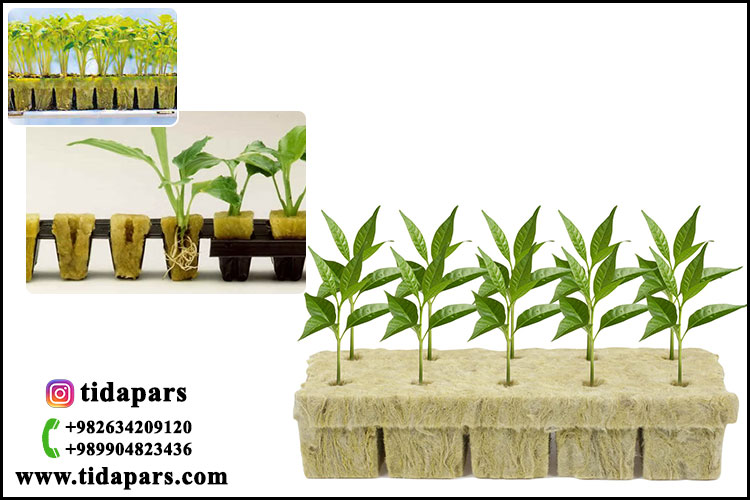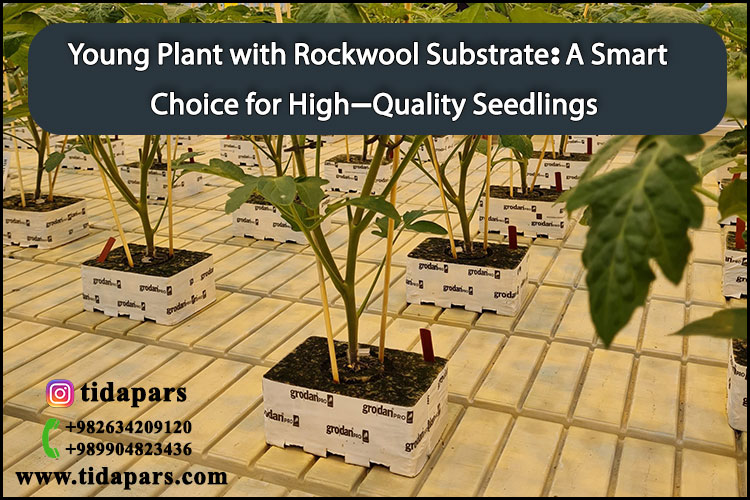Introduction
In modern greenhouse farming, the production of young plants is a crucial phase that determines the success of the entire crop cycle. One of the most effective and reliable ways to ensure healthy and uniform seedling development is by using a high-performance growing medium. Among the various options, rockwool substrate stands out as an innovative, efficient, and widely adopted choice. This article explores the advantages, applications, and technical considerations of growing young plants with rockwool, with a strong focus on SEO best practices.
What is a Young Plant?
A young plant refers to a seedling or cutting that has reached an early stage of development suitable for transplantation. These plants are typically grown in controlled environments like nurseries or greenhouses and form the foundation of commercial vegetable and ornamental plant production.

What is Rockwool?
Rockwool, also known as stone wool, is a soilless growing medium made by melting natural basalt rock and spinning it into fibers. It is inert, sterile, and known for its exceptional water retention, aeration, and drainage properties—making it ideal for rooting and seedling development.
Key Benefits of Rockwool for Young Plants
1. Excellent Aeration and Drainage
Rockwool’s fibrous structure allows for superior oxygen flow to roots while efficiently draining excess water. This minimizes root rot and promotes strong root development.
2. High Water Retention
Despite its good drainage, rockwool holds moisture very well. This ensures seedlings have consistent access to water, even between irrigations.
3. Sterile and Disease-Free
Being a synthetic medium, rockwool is free from pests, pathogens, and weed seeds, reducing the risk of disease and contamination in the nursery.
4. Compatibility with Automation
Rockwool cubes and plugs fit perfectly into nursery trays and are widely used in automated seeding and transplanting systems.
5. Perfect for Soilless Cultivation
Ideal for hydroponics, rockwool supports soilless production methods that are gaining popularity for their efficiency and scalability.

Applications of Young Plants Grown in Rockwool
Vegetable seedling production (e.g., tomato, cucumber, pepper, lettuce, basil)
Rooting of ornamental cuttings and medicinal plants
Commercial-scale hydroponic nurseries
Export of uniform, healthy seedlings to global markets
Important Considerations When Using Rockwool
🔹 Pre-treatment
Rockwool should be soaked in pH-adjusted water (pH 5.5–6.0) before use to neutralize its natural alkalinity.
🔹 Monitoring EC and pH
Regular monitoring of nutrient solution EC and pH is essential to ensure optimal growth conditions.
🔹 Humidity Management
While rockwool retains moisture, excessive drying must be avoided—especially in early growth stages.
🔹 Tray Compatibility
Rockwool plugs are designed to fit in standard nursery trays (e.g., 84, 105, or 128-cell trays), making them suitable for mass production.

Rockwool vs. Other Substrates for Young Plants
| Feature | Rockwool | Peat Moss | Cocopeat |
| Aeration | Excellent | Average | Good |
| Water Holding | High Very | High | High |
| Disease Resistance | Excellent | Moderate | Moderate |
| Reusability | Yes | Limited | Yes |
| Cost | Moderate | High | Moderate |
Conclusion
Using rockwool substrate for young plant production provides a highly efficient, clean, and scalable solution for nurseries and commercial growers. Whether you’re producing seedlings for vegetables, herbs, or ornamental plants, rockwool offers superior performance in water management, disease control, and automation compatibility. For growers aiming to reduce transplant shock and improve post-transplant growth, this combination of young plant with rockwool is an intelligent and future-oriented choice.
SEO Keywords Used in the Article
young plant
rockwool substrate
young plant tray
rockwool seedling
seedling nursery
soilless cultivation
hydroponic young plant
greenhouse propagation
nursery automation
rockwool for vegetables








